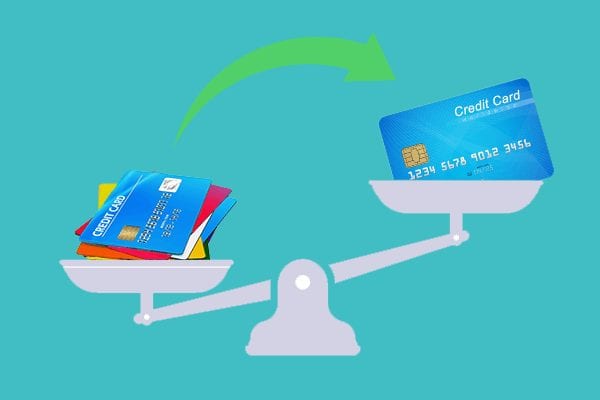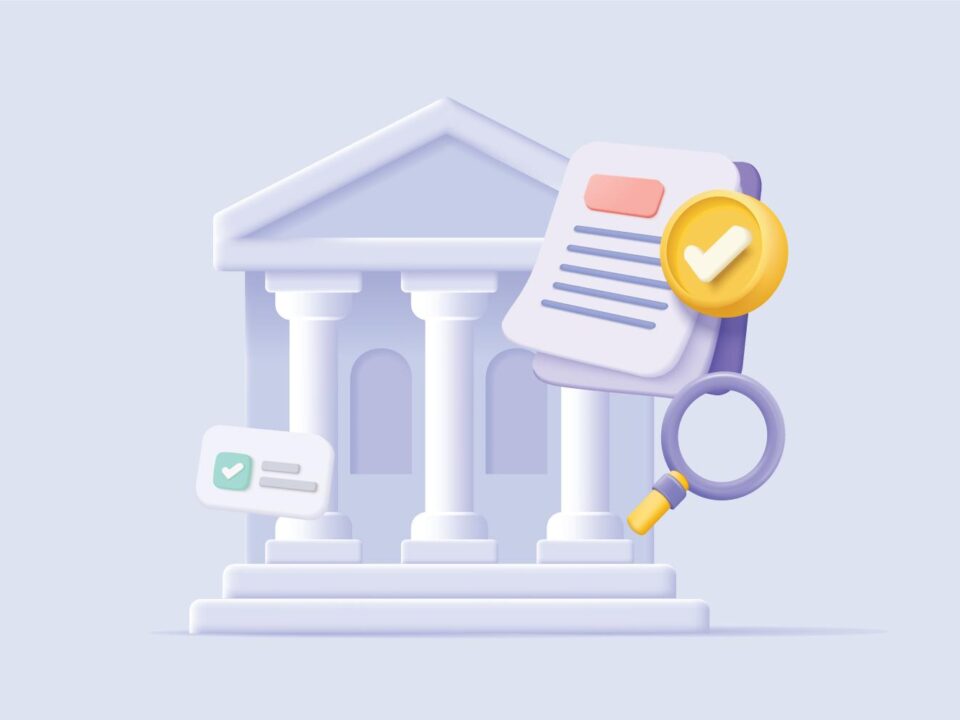Managing credit card debt is one of the biggest financial challenges many Americans face today. According to the Federal Reserve, U.S. credit card debt topped $1.1 trillion in 2024, reflecting the rising cost of borrowing and increased reliance on credit. One common strategy for tackling high-interest debt is a credit card balance transfer. While this financial move can help you save money on interest and pay down balances faster, many consumers worry about how it might influence their credit score.
In this article, we’ll dive deep into what balance transfers are, how they work, their impact on your credit score, and the best practices to ensure that transferring balances sets you up for financial success instead of setbacks.
What is a Credit Card Balance Transfer?
A balance transfer is when you move existing debt from one credit card to another, typically to take advantage of a low or 0% introductory APR offer. Many banks and card issuers promote balance transfer credit cards that give you between 6 and 21 months of zero-interest financing, allowing you to pay off debt without accruing more interest.
For example: If you have $5,000 in debt on a card charging 25% APR, transferring that balance to a new card with a 0% APR for 18 months could save you over $1,000 in interest if you pay it down within the promotional period.
However, it’s not free. Most balance transfer cards charge a transfer fee, usually between 3% and 5% of the amount transferred. So, in the above example, the $5,000 balance might cost you $150–$250 upfront to transfer.
Why a Balance Transfer Can Be Valuable
Many consumers consider a balance transfer as a way to reduce financial pressure. The main benefits include:
-
Lower interest rates: Save significantly on interest payments.
-
Faster debt payoff: Since more of your payment goes toward the principal balance.
-
Debt consolidation: Simplifies payments by moving multiple balances into one account.
-
Financial relief: Provides breathing room to better organize your finances.
While these benefits are compelling, the question remains: what happens to your credit score after you initiate a balance transfer?
How Balance Transfers Affect Your Credit Score
Your FICO score, the most widely used credit scoring model, is influenced by five major factors:
-
Payment history (35%)
-
Amounts owed/credit utilization (30%)
-
Length of credit history (15%)
-
New credit inquiries (10%)
-
Credit mix (10%)
A balance transfer can touch multiple categories at once. Let’s explore how.
Impact on Credit Utilization
Credit utilization is one of the most important parts of your score. It refers to how much of your available credit you’re using.
Credit Utilization=Total Credit Card BalancesTotal Credit Card Limits
-
If you transfer a balance to a new card and keep both cards open, your total available credit increases, and your utilization ratio may drop, which can improve your score.
-
However, if you max out the new card by transferring a large balance, your utilization on that single card may spike, which can temporarily lower your score.
For example:
-
Old Card = $5,000 balance, $10,000 limit (50% utilization)
-
New Card = $0 balance, $10,000 limit → After transfer, if you move $5,000 entirely:
-
New Card = $5,000 / $10,000 (50%)
-
Old Card = $0 / $10,000 (0%)
-
Combined Utilization = $5,000 / $20,000 (25%)
-
This scenario actually lowers your overall utilization from 50% to 25%, which can boost your credit score.
Impact of Hard Inquiries
When you apply for a new balance transfer card, the issuer pulls your credit report, which results in a hard inquiry.
-
Each hard inquiry may cause a small, temporary dip (usually 3–10 points) in your score.
-
This effect typically fades within 12 months and disappears from your report after 24 months.
-
If you apply for multiple credit cards at once, the negative impact will compound.
Impact on Length of Credit History
The age of your credit accounts contributes to 15% of your score. When you open a new balance transfer card:
-
Your average account age declines, which can slightly reduce your score.
-
Closing an old account after transferring the balance may further reduce your average account age and shrink your available credit.
For this reason, it’s usually recommended to keep your old card open with a zero balance, even if you no longer use it. This helps maintain your credit history length and total available credit.
Impact on Payment History
Payment history is the most important factor in your credit score. A balance transfer has no direct effect on your payment history, but the way you manage the new account matters.
-
If you continue making on-time payments, you build a positive record.
-
If you miss payments on the new card, your score can drop significantly—sometimes by 100 points or more.
Making payments consistently during the promotional balance transfer period is one of the best ways to strengthen your credit profile.
Debt-to-Income Ratio and Lender Perception
While not part of your official FICO score, lenders also look at your debt-to-income (DTI) ratio when approving credit. Transferring a balance doesn’t reduce your debt—it just shifts it—so your DTI remains unchanged.
However, if your utilization improves and your report shows consistent on-time payments, future lenders may view you as a lower-risk borrower.
Short-Term vs. Long-Term Effects
The effects of a balance transfer on your credit score can be mixed in the short term but typically positive in the long term, provided you manage the card responsibly.
Short-Term Effects
-
Hard inquiry → slight score drop.
-
New account → lowers average credit age.
-
High utilization on one card if you transfer a large balance.
Long-Term Effects
-
Lower overall utilization → score improves.
-
Consistent payments → strong payment history.
-
Keeping accounts open → maintains credit longevity.
Pros and Cons of Balance Transfers (From a Credit Score Perspective)
| Pros | Cons |
|---|---|
| Can lower your overall credit utilization | Hard inquiry causes a temporary dip |
| On-time payments help build history | Average account age decreases |
| Keeping old accounts open boosts total available credit | High balance on new card may look risky |
| Potential long-term score improvement | Temptation to rack up new debt on old cards |
Best Practices When Doing a Balance Transfer
To minimize negative effects and maximize credit score benefits, follow these strategies:
Choose Wisely
Apply only for a balance transfer card you have a strong chance of approval for, based on your credit profile. This avoids multiple hard inquiries.
Don’t Close Old Accounts
After the transfer, keep your old credit card accounts open unless they charge high annual fees. This preserves your credit history length and available credit.
Pay Down Aggressively
Use the introductory 0% APR window to reduce your debt as much as possible. Set up automatic payments to avoid missing due dates.
Avoid New Debt
Don’t use your old cards for new purchases, or the debt cycle will continue. Discipline is essential to making a balance transfer successful.
Keep Utilization Below 30%
Try to ensure your new balance remains under 30% of the total card limit, which is a safe utilization threshold for good scores.
Common Mistakes to Avoid
-
Ignoring transfer fees: Sometimes the fee outweighs the interest savings.
-
Paying late: A single late payment can cancel your promotional APR.
-
Maxing out new cards: This can spike utilization and hurt your score.
-
Closing multiple accounts: This reduces credit history and available limits.
-
Forgetting the promo end date: Once the 0% APR expires, rates can jump to 20% or more.
Who Should Consider a Balance Transfer?
A balance transfer makes the most sense for:
-
Borrowers with high-interest credit card debt.
-
Those with good to excellent credit scores (typically 670+) who qualify for top offers.
-
People confident they can pay off debt within the promotional period.
-
Consumers committed to avoiding new debt after the transfer.
If you have poor credit or a large balance you can’t realistically pay down within the intro period, other debt reduction strategies like debt consolidation loans, credit counseling, or hardship programs may be more effective.
Alternatives to Balance Transfers
If a balance transfer isn’t right for you, consider:
-
Debt consolidation loan: A personal loan with fixed payments may simplify debt repayment.
-
Negotiating with your current issuer: Sometimes they’ll lower your APR if you ask.
-
Debt management plans (DMPs): Nonprofit credit counseling agencies can work with creditors to reduce rates.
-
Snowball or Avalanche method: Focus payments on either the smallest balance first (snowball) or the highest interest rate (avalanche).
Final Thoughts
A credit card balance transfer can be a powerful financial move if you want to save money on interest and pay down debt faster. While it may cause a temporary dip in your credit score because of hard inquiries and changes to credit history, the long-term benefits often outweigh the drawbacks. Lower utilization, a stronger payment record, and preserved account history can all lead to a healthier credit score over time.
The key is to approach balance transfers strategically—only transfer what you can realistically pay off, keep old accounts open, and make timely payments. Done right, a balance transfer can both reduce your debt burden and strengthen your financial future.




